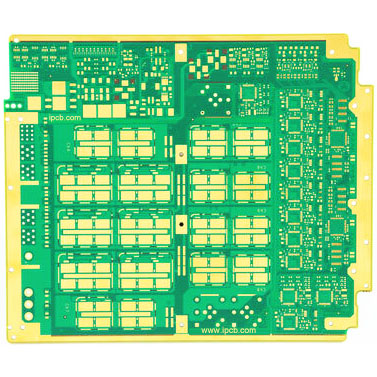Abstract: On high-speed multilayer PCBs, the mirror image layer plays an important role in noise control. A good image layer design can reduce the noise caused by stray inductance and help control crosstalk, reflection and electromagnetic interference. This article focuses on the application of the local ground plane in combination with the author's actual design, and gives a method of dividing the mirror layer through a digital-analog hybrid circuit example and some issues that need attention in practice.

Current high-speed circuit systems mostly use multi-layer boards, and many circuit systems have multiple operating power sources, which impose strict requirements on the mirroring layer design, especially how to deal with the relationship between multiple power (ground) layers. In addition, some systems also need to design a special copper plane on the device layer to suppress the RF energy generated by the oscillator and provide good heat dissipation for high-power power devices.
1. The role of the mirror layer
The mirror layer is a layer of copper-clad plane (power layer, ground layer) adjacent to the signal layer inside the PCB board, which mainly has the following functions:
Reduce return noise and electromagnetic interference (EMI). The mirror layer can provide a low impedance path for signal return, especially when there is a large current flowing in the power distribution system, the role of the mirror layer is more obvious
Show. In addition, the presence of the mirror layer reduces the area of the closed loop formed by the signal and reflow, and reduces EMI.
Helps control the crosstalk problem between signal traces in high-speed digital circuits. Crosstalk is determined by the ratio D/H, D is the distance between the interference source and the victim, and H is the height of the signal line from the mirror layer. By changing H, the ratio D/H can be controlled, and the crosstalk between the signal lines can be controlled. problem.
Conducive to impedance control. The characteristic impedance of the printed wire is related to the width of the wire and the height of the wire from the mirror layer. If there is no mirror layer, we may not be able to control the impedance, thus failing to match the transmission line, resulting in signal reflection.
In addition, the mirror layer can also control the noise radiated to the outside of the board. Of course, the mirror image layer alone is not enough to achieve these functions. It must be supplemented by strict design rules to achieve the desired goal. We can describe it like this: In high-speed digital circuits, the mirror layer is necessary to control noise, but the mirror layer alone is not enough.
2. Inter-layer jump of signal return
In a multi-layer PCB, each wiring layer should be adjacent to a mirror layer, and the return current of the signal flows on its corresponding mirror layer. When the signal line from the source to the load cannot be routed through a wiring layer, the usual approach is to first connect the signal line to a wiring layer (such as the x-axis), and then use a through hole to connect the signal line to another. One layer (e.g. Y axis). Then, when the signal line jumps from one layer to another, the return current should also follow the line to jump from one layer to another. If the two layers are both ground layers, the return current can be jumped through the through holes connecting the two layers or the ground pins of the device.
If one is the power plane and the other is the ground plane, the only opportunity for the return current to jump between these two layers is where the decoupling capacitor is placed. If there are no decoupling capacitors or through holes connected to the ground near the trip point, the return current must be routed to a remote place to achieve a jump. As a result, the return current is coupled to other circuits, causing crosstalk and electromagnetic interference problems.
Therefore, when designing the PCB, try to make the layer jumps near the ground pins or decoupling capacitors of the adjacent devices. Jump) or bypass capacitor (jump between power layer and ground layer) to achieve the return current jump.
three. Segmentation of the mirror layer
When using a multi-layer PCB structure, sometimes it is necessary to produce a certain width of copper-free area on the mirror layer () to separate a complete mirror layer into separate parts, which is the mirror layer division. Mirror layer segmentation is generally used to prevent noise from entering sensitive circuits and isolation between different reference voltages, such as preventing digital noise from entering the analog part, audio part, I/O area, and isolation of 5V and 3.3V power supply voltages. There are two types of mirror layer segmentation: complete segmentation and incomplete segmentation. Complete segmentation refers to the complete isolation between the divided power layers and ground layers, and incomplete segmentation refers to the complete isolation between the power layers and the ground layers connected by "bridges". . The complete or incomplete division of the mirror layer depends on whether there is a signal connection between these separated planes.